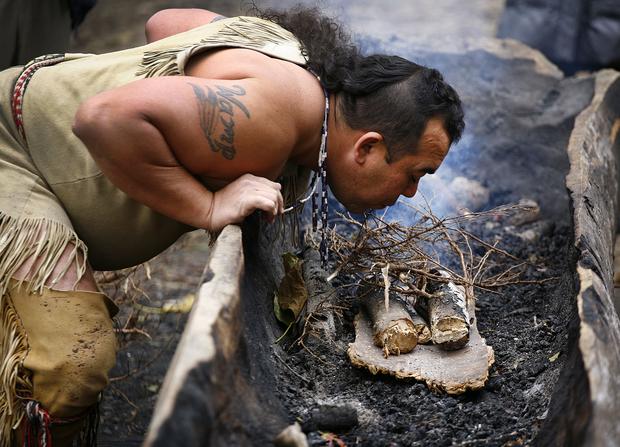
As a kid, I had some exposure to native Americans through the Shinnecock Indian Nation of eastern Long Island. They would come visit the school and perform traditional dances, and we would attend Pow Wows at their reservation. Several of my class members at Southampton Public Schools were from the tribe and lived on the reservation. When it was thanksgiving time and all of the girls would want to be pilgrims, I wanted to be an Indian. Not a girl weaving a blanket or making jewelery, but an Indian boy running around with no shirt and hunting with my bow and arrow. One of my fondest childhood memories is being about eight years old clamming with my dad. I would hang out with several other kids, all of us covered in sand and salt from swimming in the ocean. We would pretend that we lived right there on the beach and we had to make our dinner. We’d cook the clams right there on the beach over a fire. My brother on the other hand, who experienced the same exact trips as a kid, recalls these treks as disgusting. He hated the gritty sand everywhere, was itchy from being attacked by bugs, sun-burnt from his fair skin and allergic to clams. It’s funny how two kids can have the same experience and remember it two totally different ways.
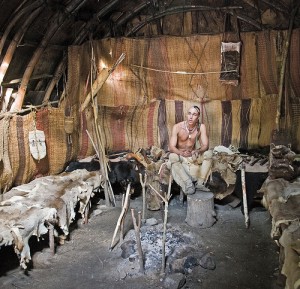
Having not grown up in Massachusetts, I have not had the experience of visiting Plimouth Plantation on school trips like Andrew did as a kid. However, years ago, Plimouth Plantation was just about the pilgrims. There was little mention of the native population that had flourished in southeastern Massachusetts for more than 10,000 years before the Pilgrims arrived. It was interesting to see how the pilgrims lived, but FASCINATING to see the Wampanoag Homesite and talk to actual tribe members during our visit.
Native people are on site simulating how life was in 1627. We first spoke with a man burning out a boat used for fishing. In the 1600’s, trees were much larger and one boat could fit up to 40 men. They would even go out in search of whales in these vessels. Fish and shellfish made up the majority of their protein intake during the summer months. Some of the fish would be smoked, but mostly for flavor and trading with more inland villages, according to our interpreters.
We learned that in the summer months, the Wampanoag people spread out and moved closer to the water and during the winter, they lived further inland and closer together in more of a village setting. Our kids enjoyed the traditional dwellings, layered thick in animal skins (even skunk skins!). Families would live together, usually three generations in one bark covered “we-tu”. In this matriarchal society, mothers usually had about three children, with spacing of about five years apart so that each child got lots of parental attention. Kids were encouraged to play, as opposed to the European settlers children who were expected to go to school and do chores at an early age. If the kids helped out, it was rewarded but it was not expected for children to act as “little adults” like in the Pilgrim community.
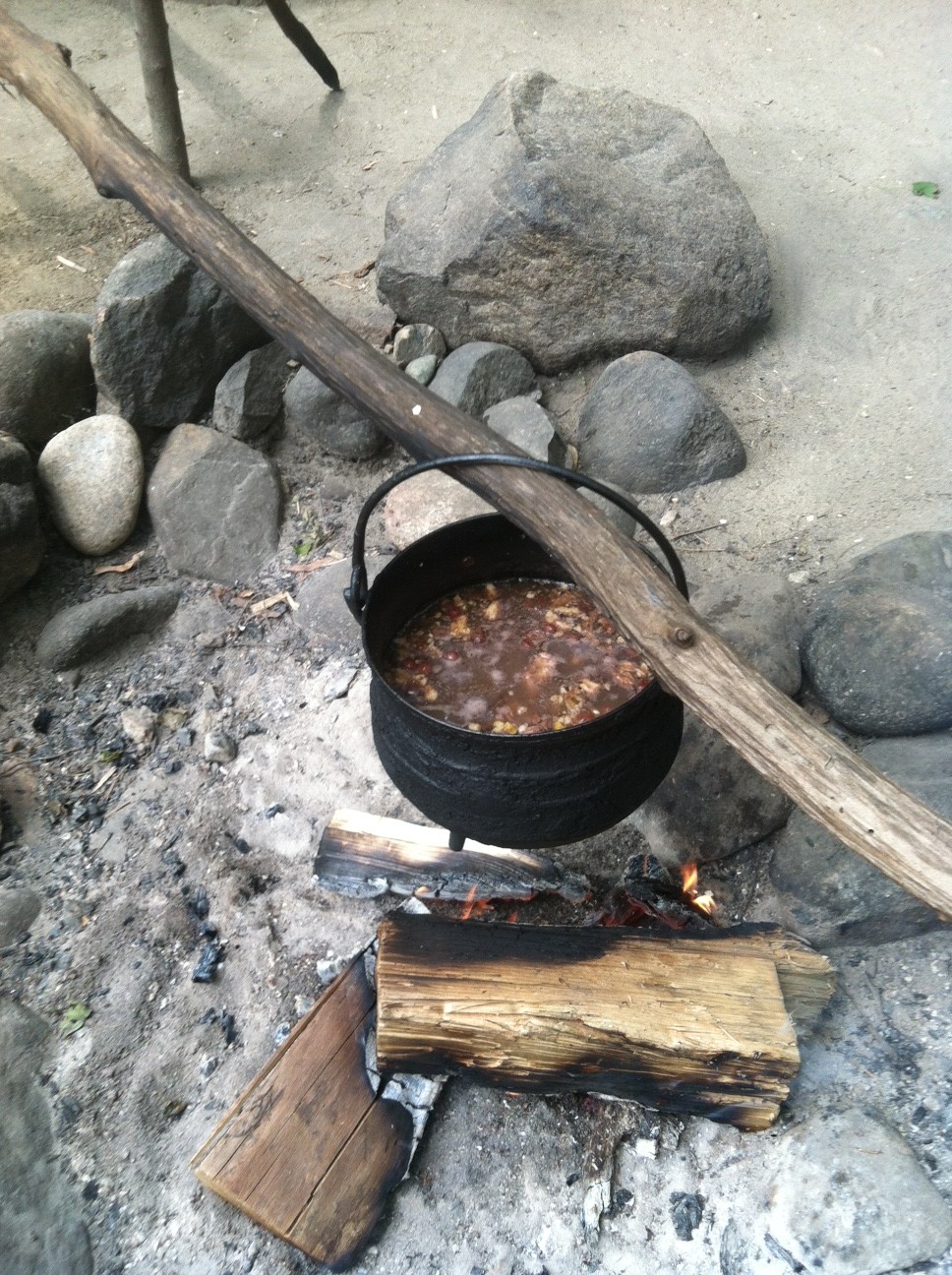
Ok, back to what they ate. Roots and tubers of plants such as bulrush, cattail, jerusalem artichoke and groundnuts were added to soups. Meat included deer, moose, beaver, rabbit, skunk, turtle and raccoon. Most of the red meat was consumed in the fall and winter. Turkey and goose were hunted in the late summer and fall. They did some farming of corn, beans and squash, but these were supplemental during the summer and mostly for winter storage. In the fall, various types of nuts, such as hazel, hickory, beech, butternut, chestnuts and white oak acorns were collected. Berries were also harvested and eaten fresh as well as dried for storage. In the photo, I shot them preparing a soup a soup made from turkey, dried cranberries, corn, walnuts, wild onion and wild garlic. They also made tea from raspberries and herbs (pictured in the top image).
After our visit to Plimouth Plantation, we spent a few hours at Duxbury Beach before heading home. Andrew can running backwards is still just a little faster than Anson.
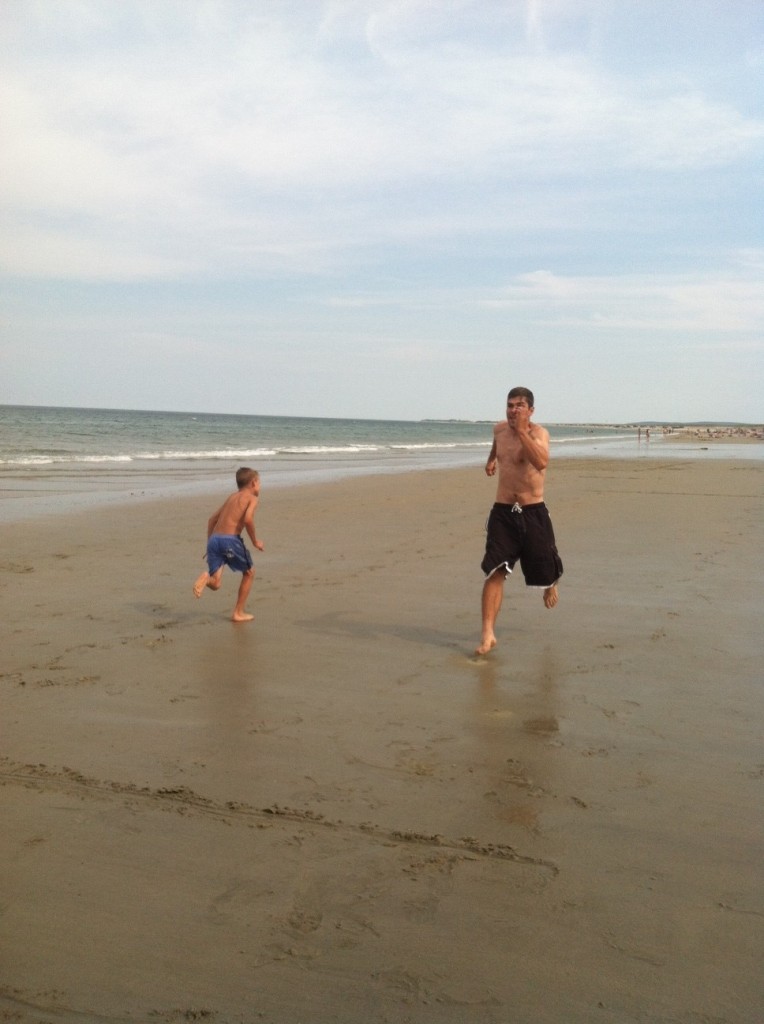 Andrew and I were talking about how the Wampanoag people seemed to be “natural” farmers. Cultivating the natural environment by encouraging certain things to grow and flourish. We are very intrigued by this idea and want to bring aspects of this to Clark Farm. For instance, instead of row cropping every square inch of the farm, letting certain areas be more wild. Allowing the sheep to graze in the pasture, but saving some scrub along the edges for the goats to eat. There are some who believe the native people of Massachusetts encouraged certain trees to grow, thus creating an ideal habitat for the animals they hunted. Others believe the rain forest is actually an overgrown orchard, intentionally planted. I really like the idea that farming doesn’t have to be mono cropping perfection and ultimate control of nature, but can exist in harmony with what naturally thrives in a particular area.
Andrew and I were talking about how the Wampanoag people seemed to be “natural” farmers. Cultivating the natural environment by encouraging certain things to grow and flourish. We are very intrigued by this idea and want to bring aspects of this to Clark Farm. For instance, instead of row cropping every square inch of the farm, letting certain areas be more wild. Allowing the sheep to graze in the pasture, but saving some scrub along the edges for the goats to eat. There are some who believe the native people of Massachusetts encouraged certain trees to grow, thus creating an ideal habitat for the animals they hunted. Others believe the rain forest is actually an overgrown orchard, intentionally planted. I really like the idea that farming doesn’t have to be mono cropping perfection and ultimate control of nature, but can exist in harmony with what naturally thrives in a particular area.


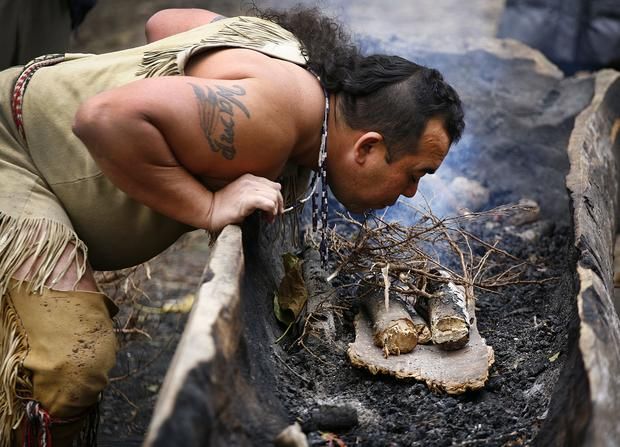






3 thoughts on “Life as 1600’s Wampanoag Native”
sweet
You called the Wampanoag people “Indians”, as a Wampanoag myself, I would appreciate it if you could refer to them as Natives instead of a name incorrectly given to them by a murderer.
Ok, changed the title. But I think you should look at how the Wampanoag refer to themselves, because numerous websites by your own people use the term “Indian”.